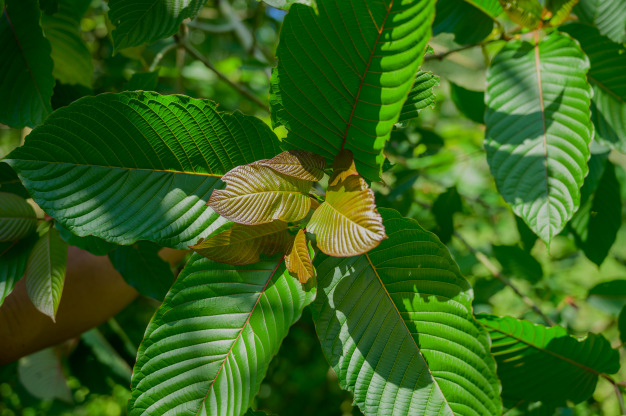Kratom is indeed an effective product that helps with your everyday problems. It helps in making your life easier. However, it is legal only in some states of the US. Most of the states have banned the use of kratom products. But with the circulation of medicinal uses of kratom, the topic has become controversial.
Kratom is known for treating many health conditions like depression, anxiety, and high blood pressure. Kratom is also being used for skin benefits.
Kratom is a drug usually used as an alternative to opioids. Kratom can also be addictive like any opioid, which is why it shows withdrawal symptoms. However, the symptoms are not as severe as other addictive drugs.
Symptoms of Kratom Withdrawal
Kratom withdrawal symptoms can be both physical and psychological. These symptoms may vary from person to person. Symptoms can be mild or severe, depending how the person has cut off from the drug.
Depression and anxiety are the common psychological symptoms, which according to research, 70 to 80% of people observe. Fortunately, these symptoms are mild and do not affect people badly.
Common physical withdrawal symptoms:
- Fever
- Seizures
- Diarrhea
- Nausea
- Loss of appetite
- Muscle ache
- Vomiting
- Abdominal cramps
- Watery eyes
- Runny nose
- Sweats
- Insomnia
- Changes in blood pressure and heartbeat
- Jerky movements of legs and arms
Common psychological withdrawal symptoms:
- Hallucination
- Delusion
- Confusion
- Mild depression
- Changes in mood
- Aggression
- Anxiety
These are some of the major symptoms being found in people who withdraw from kratom. Other than these, some other mild issues like sweating, lethargy, constipation, and the like are noticed.
How long does Kratom Withdrawal Last?
Once you start using kratom, you become addicted. Cutting off from an addictive drug takes you to its withdrawal symptoms. However, the withdrawal symptoms vary from person to person. It mainly depends on the kratom dosage you were taking and how long you have been using it.
Once you leave the kratom, you will feel the symptoms within a few hours. Symptoms can be seen 12 to 24 hours after the last dose.
The symptoms reach their peak in 3 to 4 days, while they last from 3 to 10 days. According to EMCDDA, a person who is heavily dependent on kratom is likely to face withdrawal symptoms for at least a week.
This is just an estimation. Several factors play a role in the duration of symptoms. These can be addiction history, genetics, medical and mental issues, amount of drug, duration of abusing a drug, and other environmental factors.
Since kratom is quite similar to opioids, its withdrawal symptoms are very much linked to those drugs. Within the first 12 hours of withdrawal, the person starts seeing the physical symptoms, including nausea, illness, and loss of appetite. By this time, the body starts feeling the absence of kratom.
The symptoms reach their peak by the third day. From the first to the third day, symptoms continue to develop and become severe. It is the worst stage of withdrawal. Once it is over, the hard part has gone.
Finally, after a week, the person sees the decline in the physical symptoms. Within a few days, the body starts getting back to normal. This stage can be short or long, depends upon how long the person has been abusing kratom.
If you don’t want to be dependent on kratom, it is important to know the correct dose of kratom. Using 3 grams of kratom is just fine. Anything more than that comes under high dose, which leads to addiction.
Coping with withdrawal Symptoms
Some kratom abusers like to go cold turkey, while others decrease the dosage over time. Quitting kratom completely at once can be dangerous as it can lead to severe withdrawal symptoms. Therefore, decreasing the dosage of kratom over time can be beneficial. This is the best way to get rid of a drug.
Take Medications
During kratom withdrawal, a person faces several health conditions. Taking the right medicines with the doctor’s assistance can help overcome this phase. Some of these medications can be painkillers, sleeping aids for insomnia, and anti-diarrhea.
Stay Hydrated
Diarrhea and vomiting can lead to dehydration. Eat lots of healthy and juicy fruits. Take in lots of natural fluids. All these will be beneficial in improving your health.
Take Showers and Go for a Walk
For anxiety and depression, it is recommended to take quick showers and go for a walk. These little acts can be really beneficial in distracting your mind.
Get Rest
When you face withdrawal symptoms, you should get a leave of a few days from work. Stay at home and take a nap. Resting helps with anxiety and restore energy for the rest of the day.
Do Exercises
Relaxation exercises are really important to cope with physical symptoms. Yoga, meditation, and other breathing exercises are good for insomnia, depression, and anxiety.
Seek Professional Help
Seeking help from a professional can never be a bad idea. You can always reach out to them for the best solutions. They help you manage the symptoms by prescribing you some medications, a balanced diet, and some exercises. Professionals always ask you to taper down the dose rather than going cold-turkey.
Before you make any such decision, reach out to a healthcare provider for better assistance.
Takeaway
At a moderate dosage, kratom will be helpful. However, exceeding a certain quantity can lead to some serious side effects. And when you cut back, you will possibly face withdrawal symptoms. In such a case, it is important to seek professional help to start living a normal life again.
When you start feeling the withdrawal symptoms, take them seriously. Your ignorance can make these symptoms severe. With proper medication, taking care of your diet, and physical activities, you can easily overcome this situation.
It is still better to consume kratom than to abuse opioids. If you want to get rid of opioids, it is good to shift to kratom. Different strains are used for different purposes. Maeng Da Kratom in 2021 is one of the best strains, which helps in keeping the consumer calm and composed.













